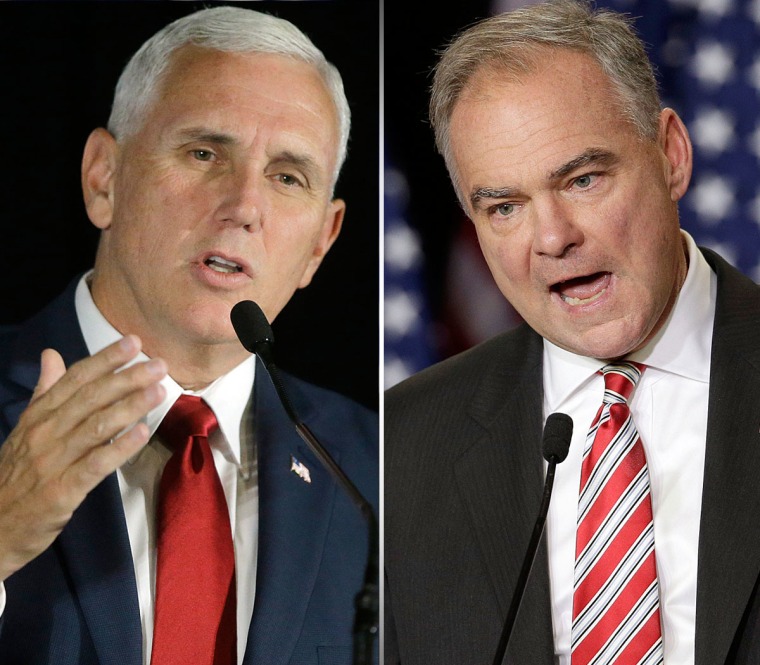A large number of likely voters said they do not know enough about either vice presidential candidate to have a positive or negative impression of the picks headed into Tuesday’s debate in Virginia.
Slightly more likely voters overall said they did not know enough about Virginia Sen. Tim Kaine (40 percent) than Indiana Gov. Mike Pence (33 percent) to have an opinion, according to the latest from the NBC News|SurveyMonkey Weekly Election Tracking Poll.
Pence will certainly try to make up ground that Trump lost after last week’s presidential debate, while Kaine will try to maintain the momentum gained by the Democrats after the first presidential debate.
The poll was conducted online from September 26 through October 2 among likely voters.
{
"ecommerceEnabled": false
}Hillary Clinton’s vice presidential running-mate, Tim Kaine, and Donald Trump’s pick, Mike Pence, will work to appeal to several groups of important voters in Tuesday’s debate at Longwood University in Farmville, Virginia. Based on data from this week’s Weekly Election Tracking Poll, however, they will have to introduce themselves to voters first before doing any persuading.
Even among each party’s respective supporters, a large number of voters say they do not know enough about the candidate to have an impression. Kaine, however, is slightly less known among voters of his party; 35 percent say they do not know enough about him to say. Among Democrats and Democratic-leaners who have an impression, 56 percent say they have a favorable impression.
{
"ecommerceEnabled": false
}Pence is more well known among Republicans and Republican-leaners; about a quarter say they do not know enough about him to have an opinion (27 percent) and 66 percent say they have a favorable impression of him.
{
"ecommerceEnabled": false
}A similar number of Independent voters who do not lean toward either party say they do not know enough about Kaine (56 percent) or Pence (52 percent) to have an impression.
Pence — who was seen as a solid pick to mobilize the traditional-right Republican base, is viewed very favorably among Republicans on the extreme right of the ideological spectrum. Among very conservative Republicans who are likely to vote, 75 percent have a favorable impression of the candidate. His favorability is more modest among centrist Republicans who said they are moderate.
{
"ecommerceEnabled": false
}Kaine, who has had a lengthy political career in Virginia, is largely viewed as a strategic pick to appeal to battleground voters in a key swing state. The Democratic VP pick is also fluent in Spanish, which might help Democrats appeal to Hispanic voters across the country. When analyzing Kaine’s favorability among likely Democrats and Democratic-leaning voters, his favorability is highest among white voters (63 percent). A large number of black and Hispanic voters say they do not know enough about him to have an opinion.
{
"ecommerceEnabled": false
}The candidates will each work hard to make themselves known among voters during Tuesday’s crucial debate. Gaining favorability and traction among voters will likely be particularly important in this year’s election—where negative feelings about the two parties’ presidential candidates are historically high.
The NBC News|SurveyMonkey Weekly Election Tracking poll was conducted online September 26 through October 2, 2016 among a national sample of 26,925 adults who are likely to vote. Respondents for this non-probability survey were selected from the nearly three million people who take surveys on the SurveyMonkey platform each day. Results have an error estimate of plus or minus 1.0 percentage points. For full results and methodology, click here.
